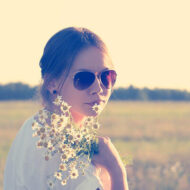6 Rules of Drawing Composition
The rules of drawing composition sound boring from the get-go, doesn’t it? Rules generally do make one groan and roll their eyes. But bear with me. These rules are the fundamentals of better art.
Do you need to follow all of them all of the time? Maybe in the beginning. At least until you understand them inside and out. After all, you can only break the rules once you know them like the back of your hand.
I’ll be illustrating the rules with photos, but you would compose your drawings in the same manner. So, without further ado, let’s dive into the 6 rules of drawing composition.
1.Central Focus:

Photo Credit: Pixabay-Veronika Andrews

Photo Credit: Pixabay-Yingjia Wu
Exactly like it sounds, in this type of composition, the subject you want people to focus on is right smack in the center of your canvas. While this has the potential to be boring, you can use certain things like leading lines and contrast to boost interest. The photo on the flower, for example, is nice, but there’s not much that’s going to keep your interest for long. Whereas the egret is also right in the center of the photo, but the twisted branches surrounding it adds to the interest.
2.Rule of Thirds:

Photo Credit: Pixabay-lauraelatimer0

Photo Credit: Pixabay-pen_ash
Used by photographers and artists alike, the rule of thirds divides the image up into 9 even squares, like a tic-tac-toe. Your points of interest should fall on the thirds. For example, in the photo of the two women on the left, both women fall right on the vertical lines. And in the image of the pelicans, they lie right under the bottom line of the thirds. Many times, if the image is of a face, the eyes will sit on one of the top intersections of lines as we see in the photo of the woman on the right. Not only is she standing on the right vertical line, but her eyes right on the intersection of lines. The intersecting points are powerful focal points. The rule of thirds keeps your drawing composition balanced and usually more interesting than the central focus variety.
3.Background, Middle Ground, Foreground:

Photo Credit: Pixabay-Martin Winkler
Having a good sense of this one, gives your drawings and paintings depth and space. In the image above, the house is in the foreground and naturally our focus is drawn to it. The hills immediately behind it, is the middle ground. And the mountain behind them is the background. Not only does this image utilize background, middle ground, and foreground, it also uses contrast, which we’ll discuss next.
4.Contrast:

Photo Credit: Pixabay-Thanh Nguyen

Photo Credit: Pixabay-Victoria Borodinova
This technique involves a marked difference between your subject and the things surrounding it. If everything around your subject is light in tone but your subject is dark, the viewer’s eye will be drawn to your subject. The same happens if everything is in muted colors but your subject is in a vibrant red.
5.Focus/Blur:

Photo Credit: Pixabay-pen_ash
Both photographers and artists will use this method to call attention to what they want. In most cases, distracting backgrounds can be blurred out to call attention to the main subject, as seen with the above image of cherry blossoms. I can’t think of a time when I haven’t used this method when drawing pet portraits. A lot of the photographs I receive of people’s pets have pet toys or furniture surrounding the animal. If I think it’s critical to the portrait, I’ll leave it in. If it will only be a distraction, I blur it out or eliminate it all together.
6.Asymmetry:

Photo Credit: Pixabay-Andrew Virnuls

Photo Credit: Pixabay-Manfred Antranias Zimmer

Photo Credit: Pixabay-Paul McGowan
When your drawing composition is symmetrical, things are pretty much evenly balanced on both sides. It has the potential for being boring (no offense to the photographer). It’s a perfectly balanced photo and that’s great, if that’s what you’re after. However, when asymmetry is used properly, it creates a bit of tension and a little more interest. It could be as simple as slanting the horizon line and your subject right along with it.
It’s not that you have to use each and every one of these in every drawing you do.
In fact, doing so would be a little difficult with some, such as central focus and rule of thirds. You wouldn’t be able to follow the rule of thirds if you’re putting things right smack in the center of your artwork. But you could, for example, use contrast or blurring with either one of those. Drawing composition involves you, the artist, making a conscious and well-informed decision about…well, the composition of your drawing, as opposed to just placing things wherever without really putting much thought into it.
Following the rules of composition, makes for a much more refined work of art. It will automatically set you apart from beginners and improve your drawings right away. Work through the list and try one at a time. Different rules may lend themselves more easily to certain subjects or moods that you’re after. You can even use some of these to take better photos with your smart phone!
This blog contains Amazon Affiliate links. As an Amazon Associate, I may earn from qualifying purchases.


Recent Comments